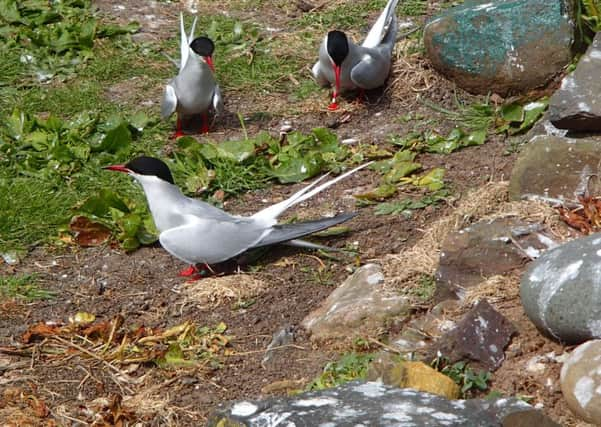Record-breaking trip for migrating seabird from Northumberland coast


A study carried out by scientists at Newcastle University for BBC’s Springwatch has mapped for the first time the incredible annual migration of Arctic terns from the Farne Islands.
Weighing just 100g, the Arctic tern has the longest migration of any bird, travelling all the way to Antarctica for the winter and back to the Farnes, which are owned and managed by the National Trust, to breed in the spring.
Advertisement
Hide AdAdvertisement
Hide AdLast year, 29 birds were fitted with geolocators by local researchers from Newcastle University watched by Springwatch presenter Nick Baker and National Trust rangers. The first of the Terns arrived back in the Farnes this spring.
One bird was found to have made a 96,000km round trip between Northumberland and its winter home in the Weddell Sea, Antarctica.
This is the longest flight ever recorded for a migratory bird. The previous record was held by an Arctic tern from the Netherlands, which had made a 91,000km round trip to its wintering grounds and back.
The researchers, Dr Richard Bevan and Dr Chris Redfern, of Newcastle University, will speak about the ground-breaking study on Springwatch tonight.
Advertisement
Hide AdAdvertisement
Hide Ad“It’s really quite humbling to see these tiny birds return when you consider the huge distances they’ve had to travel and how they’ve battled to survive,” says Dr Bevan, of the university’s School of Biology.
“So far we’ve managed to catch 16 of our tagged birds from last year and we’ve seen at least another four birds with our geolocators attached.
“We have been able to track our record-breaking Arctic tern as it flew down the coast of West Africa, crossed into the Indian Ocean and eventually arrived in Antarctica.
“Further analysis of the data from these trackers will allow us to get a better understanding of how the Arctic terns organise their migration and how global climate change may affect their routes.”
Advertisement
Hide AdAdvertisement
Hide AdMore than two thousand pairs of Arctic terns breed on the Farnes, which have been under National Trust care since 1925.
Lana Blakely, Trust ranger on the Islands, said: “Thousands of visitors flock to the Farnes every year to enjoy the remarkable wildlife.
“What our visitors don’t always see is the scientific work that our rangers have been doing behind the scenes for over four decades to monitor wildlife on the islands.”
Springwatch presenter Iolo Williams added: “Arctic Terns are delicate birds that have been bewitching Springwatch viewers for many years. We are delighted to be a part of this innovative research by Newcastle University with the National Trust.”